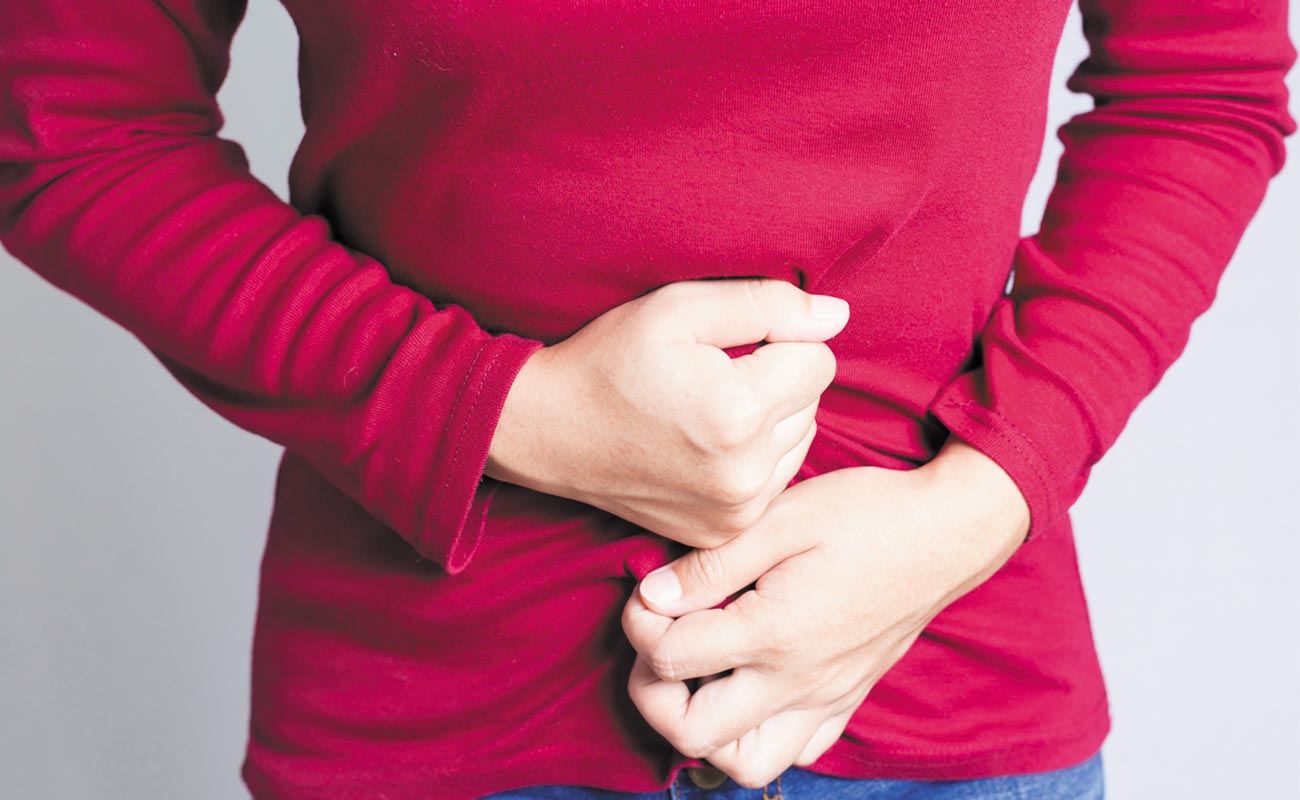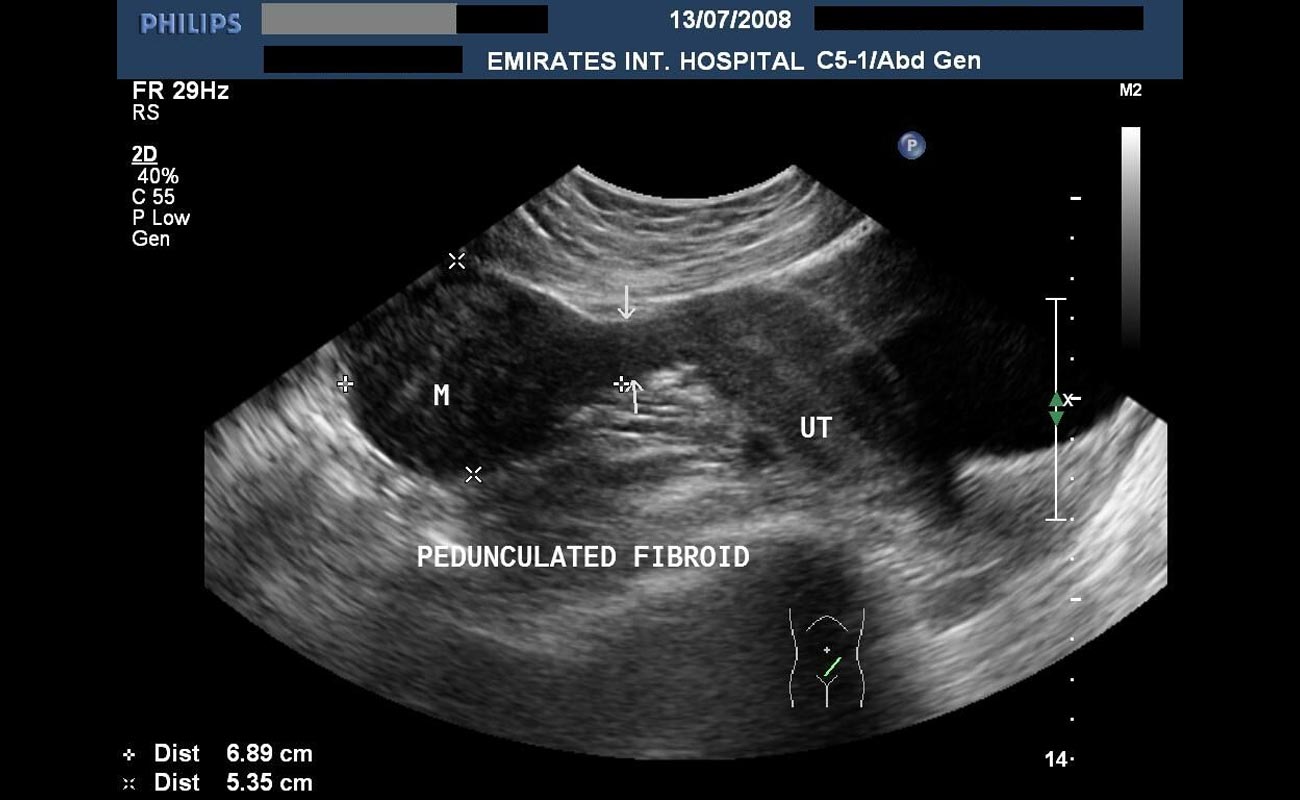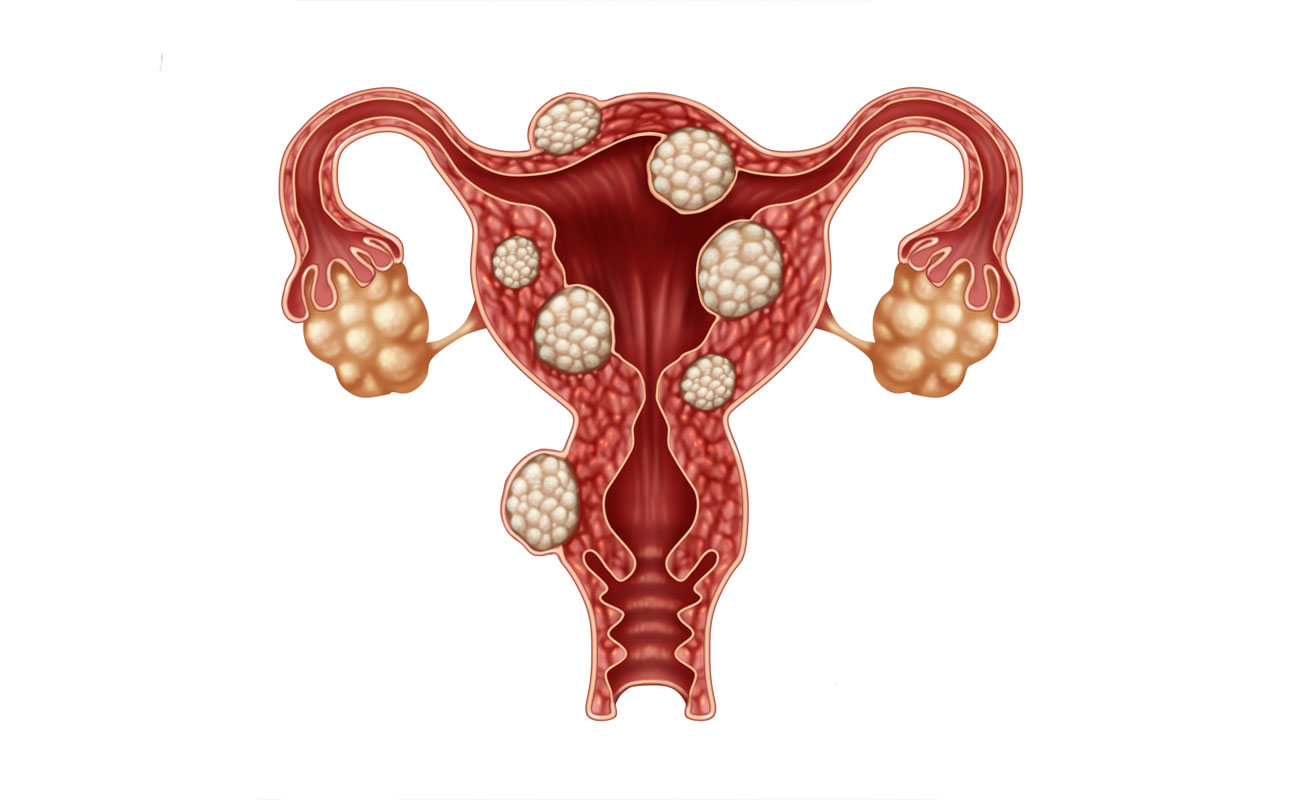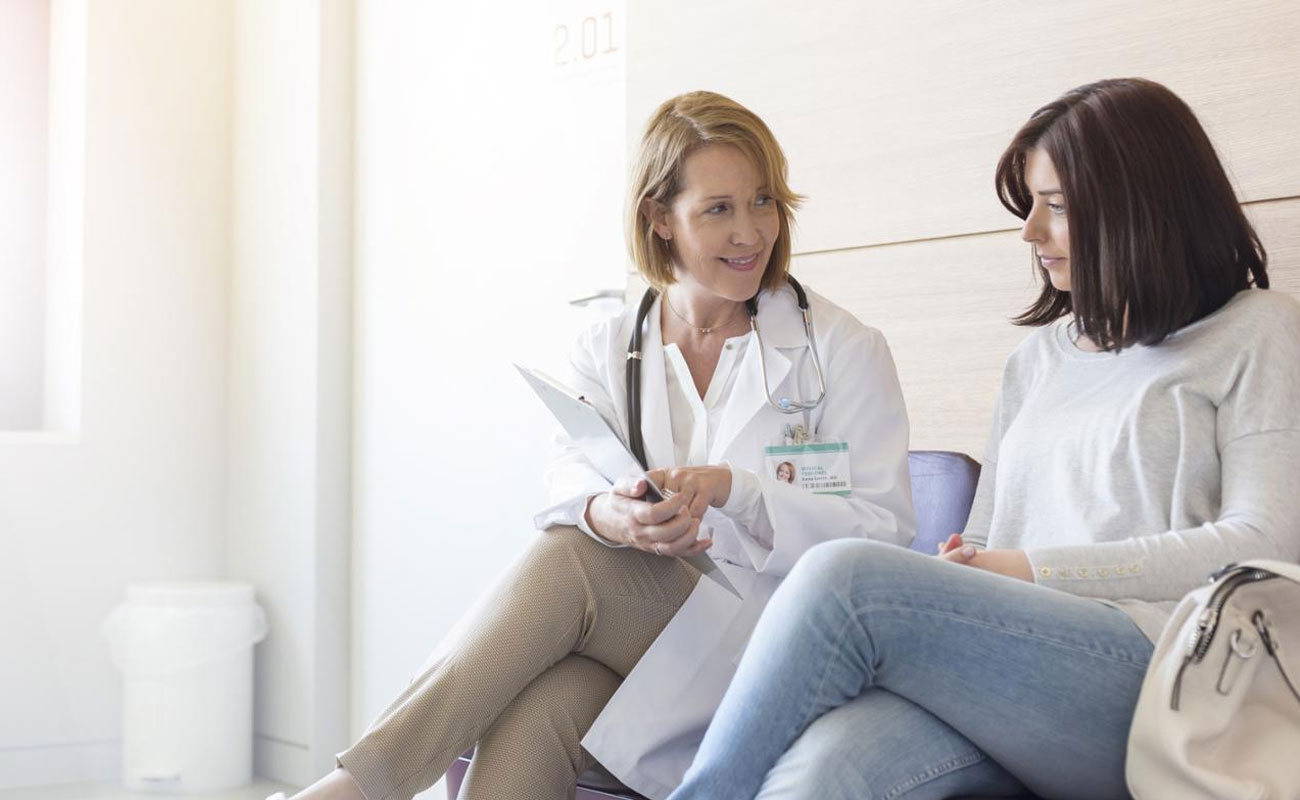Non-cancerous growths called fibroids in or around the womb can affect fertility. In some cases, they may prevent a fertilized egg attaching itself to the womb, or they may block a fallopian tube.

Fibroids are the most frequently seen tumors of the female reproductive system. Fibroids, also known as uterine myomas, leiomyomas, or fibromas, are firm, compact tumors that are made of smooth muscle cells and fibrous connective tissue that develop in the uterus. It is estimated that between 20 to 50 percent of women of reproductive age have fibroids, although not all are diagnosed. Some estimates state that up to 30 to 77 percent of women will develop fibroids sometime during their childbearing years, although only about one-third of these fibroids are large enough to be detected by a health care provider during a physical examination.
In more than 99 percent of fibroid cases, the tumors are benign (non-cancerous). These tumors are not associated with cancer and do not increase a woman's risk for uterine cancer. They may range in size, from the size of a pea to the size of a softball or small grapefruit.

Many women who have fibroids don't have any symptoms. In those that do, symptoms can be influenced by the location, size and number of fibroids. In women who have symptoms, the most common symptoms of uterine fibroids include:
Rarely, a fibroid can cause acute pain when it outgrows its blood supply, and begins to die.
Fibroids are generally classified by their location. Intramural fibroids grow within the muscular uterine wall. Submucosal fibroids bulge into the uterine cavity. Subserosal fibroids project to the outside of the uterus.
See your doctor if you have:
Seek prompt medical care if you have severe vaginal bleeding or sharp pelvic pain that comes on suddenly.
We do not know exactly why women develop these tumors. Genetic abnormalities, alterations in growth factor (proteins formed in the body that direct the rate and extent of cell proliferation) expression, abnormalities in the vascular (blood vessel) system, and tissue response to injury have all been suggested to play a role in the development of fibroids.

Family history is a key factor, since there is often a history of fibroids developing in women of the same family. Race also appears to play a role. Women of African descent are two to three times more likely to develop fibroids than women of other races. Women of African ancestry also develop fibroids at a younger age and may have symptoms from fibroids in their 20s, in contrast to Caucasian women with fibroids, in whom symptoms typically occur during the 30s and 40s. Early pregnancy decreases the likelihood that fibroids will develop. Fibroids have not been observed in girls who have not reached puberty, but adolescent girls may rarely develop fibroids. Other factors that researchers have associated with an increased risk of developing fibroids include having the first menstrual period (menarche) prior to age 10, consumption of alcohol (particularly beer), uterine infections, and elevated blood pressure (hypertension).
Estrogen tends to stimulate the growth of fibroids in many cases. During the first trimester of pregnancy, about a third of fibroids will enlarge and then shrink after the birth. In general, fibroids tend to shrink after menopause, but postmenopausal hormone therapy may cause symptoms to persist.
Overall, these tumors are fairly common and occur in about 70% to 80% of all women by the time they reach age 50. Most of the time, uterine fibroids do not cause symptoms or problems, and a woman with a fibroid is usually unaware of its presence.
Uterine fibroids are frequently found incidentally during a routine pelvic exam. Your doctor may feel irregularities in the shape of your uterus, suggesting the presence of fibroids. If you have symptoms of uterine fibroids, you doctor may order these tests:

Most uterine fibroids are harmless, do not cause symptoms, and shrink with menopause. But some fibroids are painful, press on other internal organs, bleed and cause anemia, or cause pregnancy problems. If you have a fibroid problem, there are several treatments to consider. Fibroids can be surgically removed, the blood supply to fibroids can be cut off, the entire uterus can be removed, or medicine can temporarily shrink fibroids or manage symptoms. Your choice will depend on whether you have severe symptoms and whether you want to preserve your fertility.
If you have uterine fibroids but you have few or no symptoms, you don't need treatment. Instead, your doctor will recommend watchful waiting. This means that you will have pelvic exams to check on fibroid growth and symptoms. Talk with your doctor about how often you will need a checkup.
If you are nearing menopause, watchful waiting may be an option for you, depending on how tolerable your symptoms are. After menopause, your estrogen and progesterone levels will drop, which causes most fibroids to shrink and symptoms to subside.
If you have pain or heavy menstrual bleeding, it may be from a bleeding uterine fibroid. But it may also be linked to a simple menstrual cycle problem or other problems. For more information, see the topic Abnormal Uterine Bleeding. The following medicines are used to relieve heavy menstrual bleeding, anemia, or painful periods, but they do not shrink fibroids:
webmd.com, mayoclinic.org, everydayhealth.com, today.com, medicinenet.com, mayoclinic.org, obgyn.ucla.edu.
Submit Comment